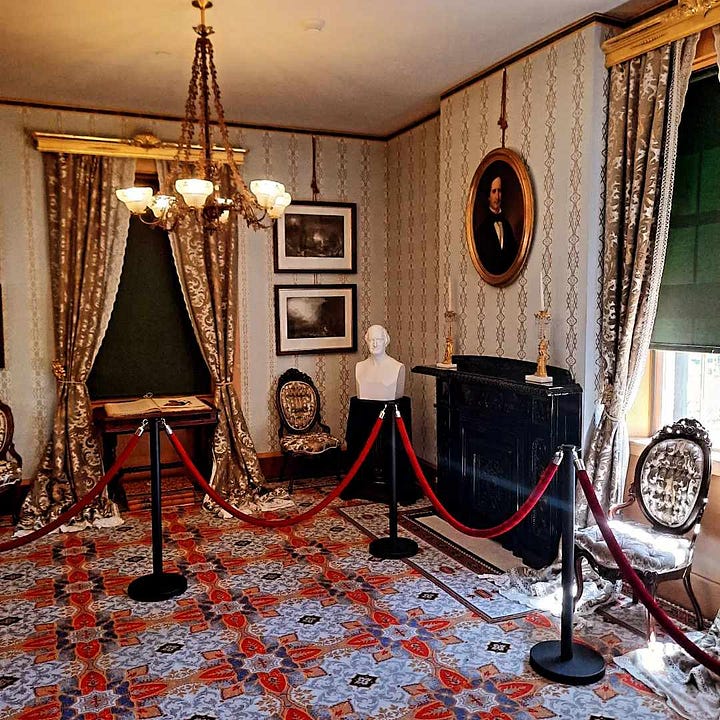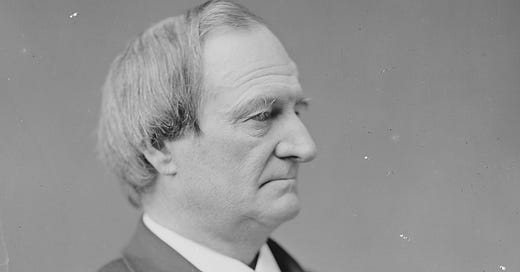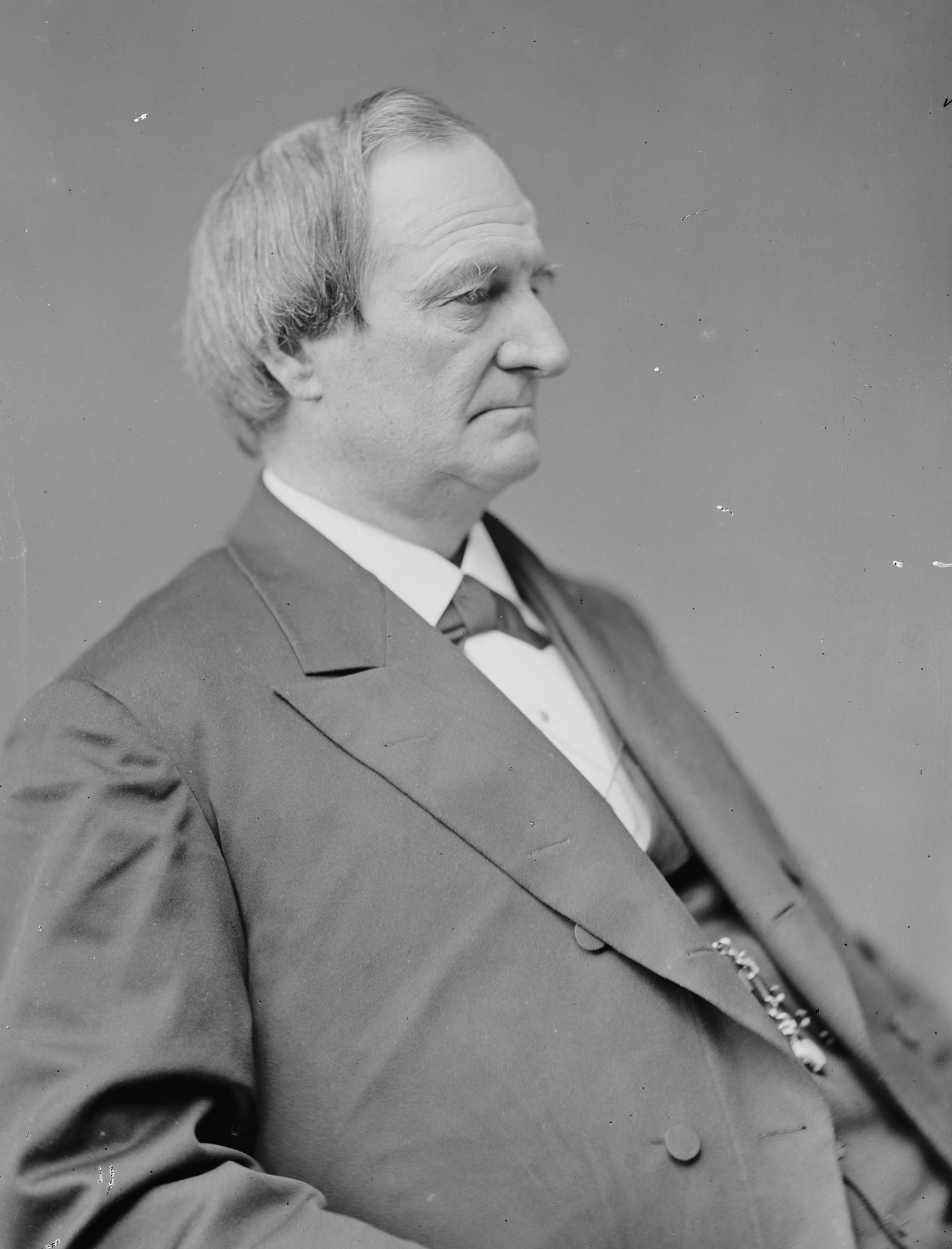Last week, I wrote about a trip to Spring Grove Cemetery in Cincinnati, Ohio, that I made to look for graves with books on them. While I was driving through the cemetery, a marker for Alphonso Taft caught my attention. The name stood out to me as I had recently read and wrote about the life of his son, former President and Supreme Court Justice William Howard Taft.

Alphonso Taft was born in Townsend, Vermont, in 1810 to Peter Rawson Taft and Sylvia Howard. His father was a lawyer, judge, and legislator. His family was considered powerful but not wealthy, and he worked in order to afford his own schooling. He eventually went to Yale, studied law, and was admitted to the Connecticut Bar in 1838.
Taft moved to Cincinnati in 1839. He did not want to work in New York due to what he saw as corruption there occurring under the influence of wealth. He would become a distinguished figure in Cincinnati.1 Taft was noted to be a strong abolitionist and fought against those who supported the Confederate cause in Cincinnati during the Civil War.2
He held various prominent roles including first president of the Cincinnati Bar Association, a judge on the Superior Court of Cincinnati, both Secretary of War and subsequently Attorney General under the administration of Ulysses S. Grant, and U.S. minister to Austria-Hungary and Imperial Russia under President Chester A. Arthur. In all of these roles, he was noted to fight for the protection of vulnerable populations. He supported policies to protect Blacks targeted for violence during the Reconstruction era in the South and defended Jewish populations being discriminated against in Russia.34
John D. Minor et al. versus the Board of Education of the City of Cincinnati et al.
There was a decision Taft made during his time as judge on the Cincinnati Supreme Court that stood out to Ulysses S. Grant as independent and influenced his decision to appoint Taft.
Taft dissented against a decision of the Supreme Court of Cincinnati in 1872 in the case John D. Minor et al. versus the Board of Education of the City of Cincinnati et al. The question at hand was if the Cincinnati Board of Education was within its rights to stop the reading of the Bible and hymn singing in public schools. While the rest of the court decided that it was not within the board's rights, Taft disagreed. In his dissent he stated:
“the Constitution of the State did not recognize the Christian religion any more than it recognized the religions of any other citizens of the state” and that “the school board had an obligation as well as a right to keep religious partisanship out of the public schools.”5
At the time of this decision, his argument mostly centered around protecting the rights of Jewish and Roman Catholic students and families. The reading of the Bible and hymn singing in question apparently communicated Protestant supremacy to other religions and Christian denominations. His dissent later influenced the Ohio Supreme Court, who overturned the decision of Cincinnati’s Supreme Court.


Taft’s decision, which was noted to be unpopular at the time, might have had a later influence on his loss of the Republican nomination for Ohio Governor to later President Rutherford B. Hayes.6
Alphonso Taft seemed to be ahead of his time in his interpretation of an issue that to this day is being contested.
Next up
At the cemetery, I decided to walk around the section where Taft was buried and was even more surprised to find the grave of another individual who has ties to a former Silent Sod post. Next week, I will discuss Henry Boyd, a man born into slavery in Kentucky who purchased his freedom and rose to prominence as a furniture maker in Cincinnati.
https://en.wikipedia.org/wiki/Alphonso_Taft
Anthony, Carl Sferrazza. February 21, 2006. Nellie Taft: The Unconventional First Lady of the Ragtime Era. William Morrow Paperbacks. 65.
https://en.wikipedia.org/wiki/Alphonso_Taft
Anthony, Carl Sferrazza. February 21, 2006. Nellie Taft: The Unconventional First Lady of the Ragtime Era. William Morrow Paperbacks. 150.
https://www.courtclerk.org/IMAGES/historical/1869%20Taft%20Whiskey%20Case%20Research.pdf
https://en.wikipedia.org/wiki/Alphonso_Taft





